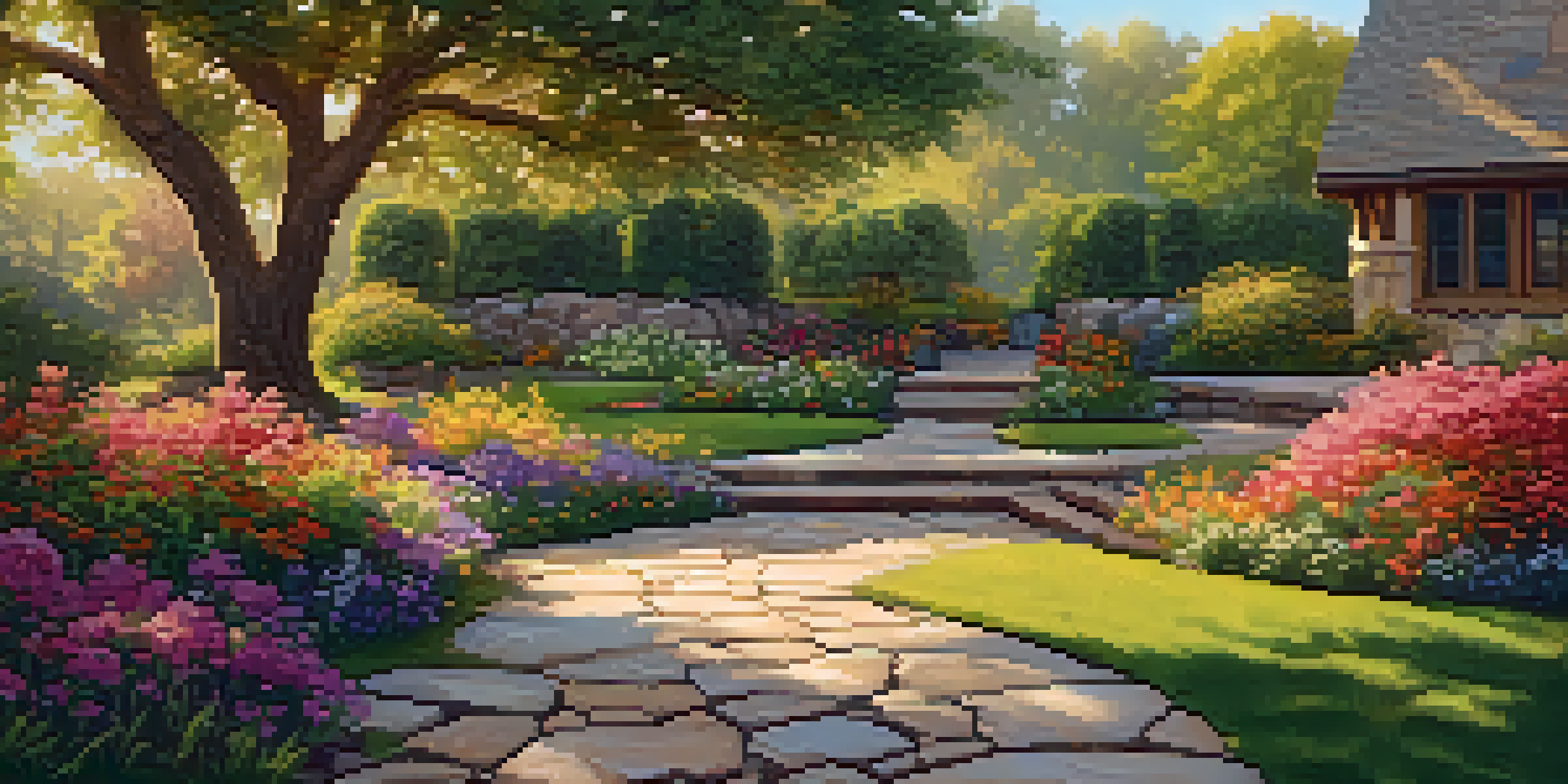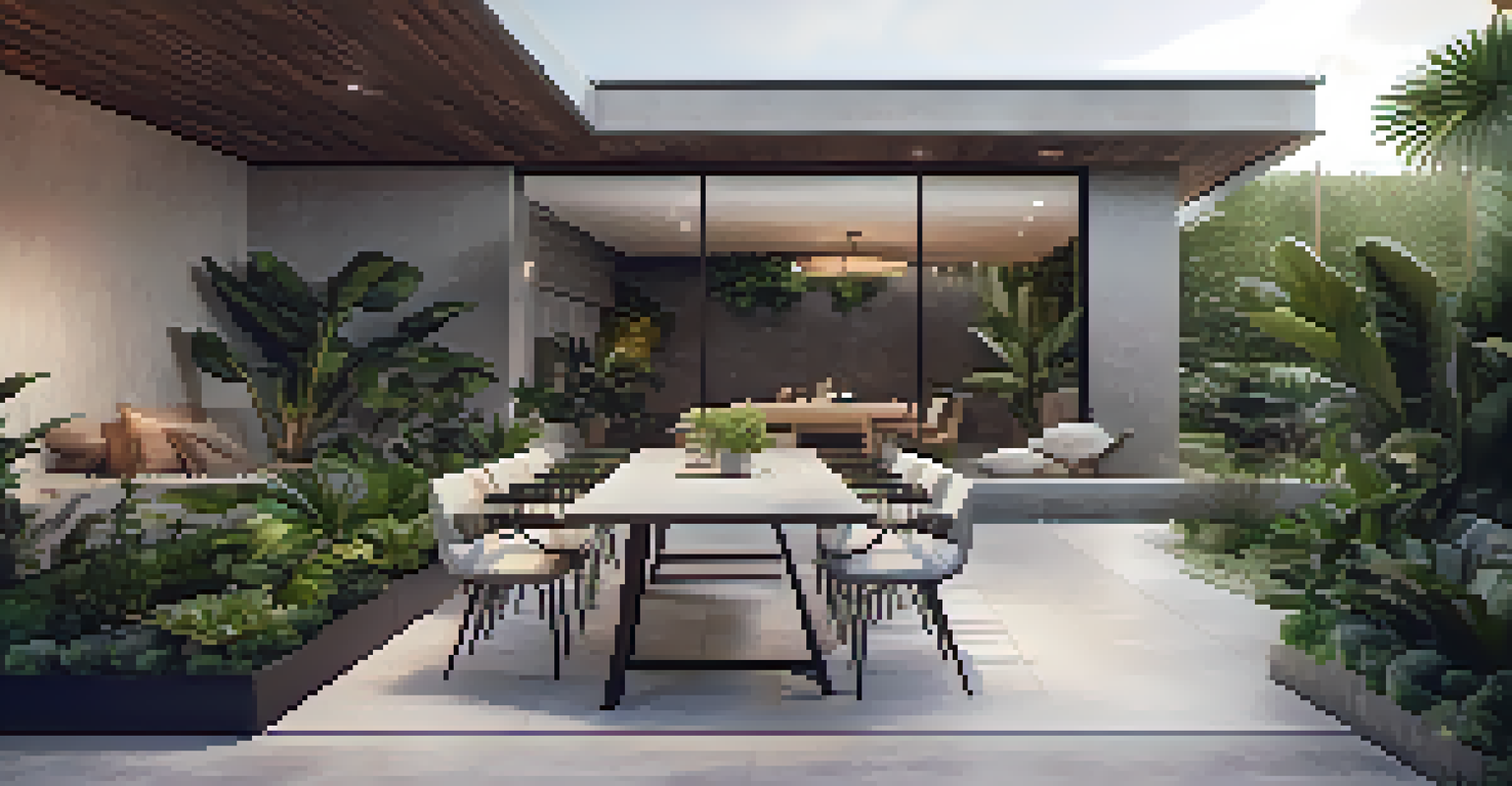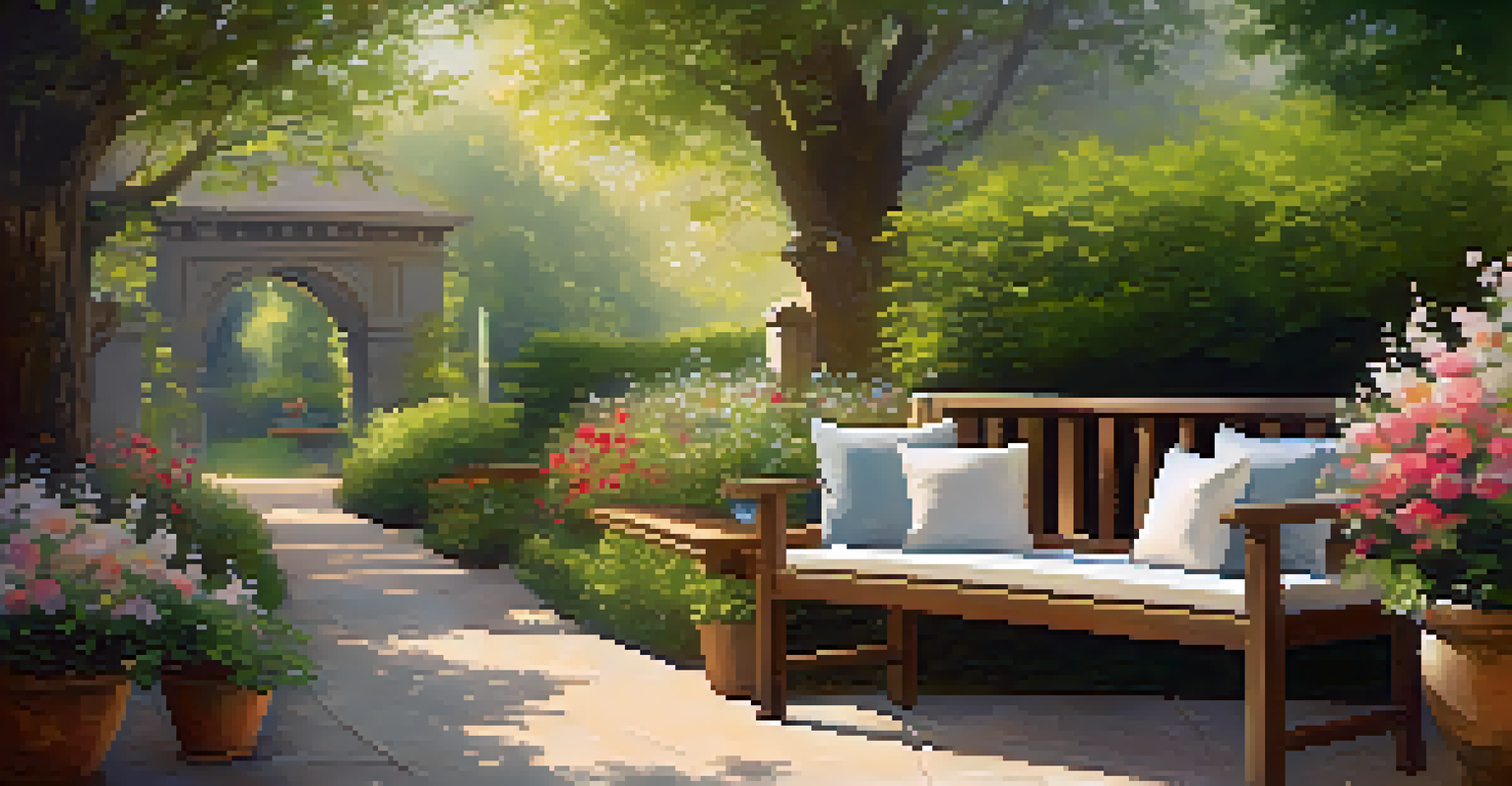Creating a Landscape That Reflects Your Personal Style

Understanding Your Personal Style in Landscaping
Before diving into landscaping, take a moment to reflect on your personal style. Consider what colors, materials, and themes resonate with you in your home and surroundings. This reflection will serve as the foundation for your landscape design, helping you create a cohesive and inviting outdoor space.
Gardening adds years to your life and life to your years.
For example, if you love a rustic look, incorporating natural stone paths and native plants can enhance that vibe. On the other hand, a modern aesthetic might call for sleek lines and minimalist features, like geometric planters or a water feature. Knowing your style will guide your decisions and ensure the landscape feels uniquely yours.
Additionally, consider your lifestyle and how you use your outdoor spaces. If you enjoy entertaining, think about creating areas for gathering, like a patio or fire pit. By aligning your landscape with both your style and needs, you create a space that’s not only beautiful but also functional.
Choosing the Right Plants for Your Landscape
Plants play a crucial role in shaping the character of your landscape. Begin by selecting plants that reflect your personal style while also considering your local climate and soil conditions. Native plants are often a great choice, as they thrive in your area and require less maintenance.

For example, if you favor a tropical feel, consider adding colorful hibiscus or palm trees. If your style leans more towards a Mediterranean aesthetic, lavender and olive trees can create that desired atmosphere. Mixing various textures and colors can also add depth and interest to your landscape.
Define Your Personal Style
Reflecting on your personal style and lifestyle needs is essential for creating a cohesive and inviting landscape design.
Don’t forget to think about seasonal changes, too! Choosing evergreen plants ensures that your landscape remains vibrant throughout the year, while deciduous plants can provide stunning fall colors. This thoughtful selection will keep your outdoor space lively and true to your style, regardless of the season.
Incorporating Hardscaping Elements
Hardscaping refers to the non-plant elements of your landscape, such as patios, walkways, and fences. These features can significantly influence the overall feel of your outdoor space, so choose materials that complement your style. For instance, rustic wood or natural stone can enhance a cozy, inviting atmosphere.
The best time to plant a tree was twenty years ago. The second best time is now.
If you prefer a modern look, sleek concrete or metal accents can create a stark, clean contrast with softer plant materials. Think about how these hardscaping elements can guide movement through your landscape, perhaps with winding paths leading to different areas of interest.
Moreover, consider functional hardscaping features like seating walls or outdoor kitchens. These additions not only serve a purpose but also allow you to express your style in a practical way. When designed thoughtfully, hardscaping can create a harmonious blend with your greenery.
Creating Zones for Different Activities
One effective way to personalize your landscape is by creating specific zones for various activities. Think about how you want to use your outdoor space—whether for relaxation, entertainment, or gardening. Designating areas for these activities can help organize your landscape while reflecting your lifestyle.
For instance, you might create a cozy reading nook with comfortable seating, surrounded by fragrant flowers. Alternatively, a vibrant dining area can be set up with a stylish table and shade from trees or umbrellas, perfect for summer gatherings. These zones not only enhance functionality but also add layers to your landscape design.
Choose the Right Plants
Selecting plants that align with your style and local climate will enhance your landscape's character and ensure low maintenance.
When designing your zones, consider incorporating pathways or borders to define each area. This can create a sense of flow and encourage exploration throughout your landscape. By thoughtfully segmenting your outdoor space, you ensure that it meets your personal needs and preferences.
Utilizing Color and Texture for Impact
Color and texture are powerful tools in landscape design that can reflect your personal style. Start by choosing a color palette that resonates with you; this could be vibrant and bold or soft and muted. Incorporating a mix of colors can create a dynamic look, while sticking to a cohesive palette can provide harmony.
Texture also plays an important role in adding visual interest. Combining smooth surfaces, like pebbled paths, with rough textures, such as tree bark or stone walls, can create a tactile experience that invites exploration. Think about how different materials can enhance the overall feel of your space.
Remember, seasonal changes can affect how colors and textures are perceived. By thoughtfully selecting plants and materials that shift with the seasons, you can maintain a lively and engaging landscape all year round. This approach ensures that your outdoor space continues to reflect your style, no matter the time of year.
Adding Unique Personal Touches
To truly make your landscape your own, consider adding unique personal touches that reflect your interests and hobbies. This could be anything from a custom garden sculpture to a whimsical birdhouse. These elements not only showcase your personality but also tell a story about who you are.
For example, if you’re passionate about gardening, you might incorporate raised beds or a potting station to showcase your skills. Alternatively, if you love art, consider creating a gallery wall with outdoor-friendly art pieces. These personal touches can transform your landscape into a true extension of your home.
Create Functional Zones
Designating specific areas for different activities in your outdoor space can improve functionality and better reflect your lifestyle.
Additionally, don’t overlook the importance of lighting. Unique outdoor lighting can highlight your personal touches and create ambiance in the evenings. Whether it’s string lights, lanterns, or spotlights, thoughtful lighting can enhance the atmosphere and make your landscape feel more inviting.
Maintaining Your Landscape to Reflect Your Style
Creating a landscape that reflects your personal style is just the beginning; maintenance is key to keeping it looking its best. Regular care, such as pruning, weeding, and watering, ensures that plants flourish and hardscaping remains in good condition. Set a maintenance schedule that fits your lifestyle to keep your landscape thriving.
Remember, maintenance doesn’t have to be daunting. Consider involving family members or friends in the process, turning it into a fun outdoor activity. Additionally, using tools like mulch can help reduce weeds and retain moisture, making upkeep a little easier.

As seasons change, be prepared to adapt your landscape accordingly. This might mean swapping out annuals, adjusting your watering routine, or even rethinking certain design elements. By staying engaged with your landscape, you ensure that it continues to reflect your personal style, growing and evolving alongside you.